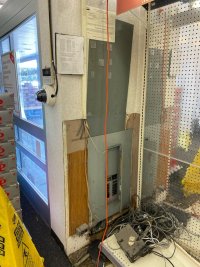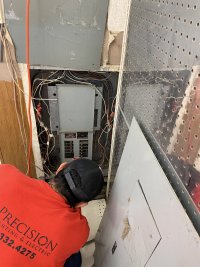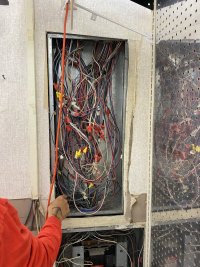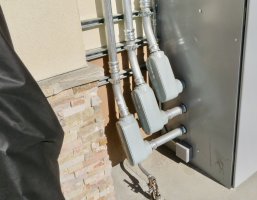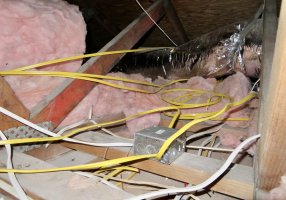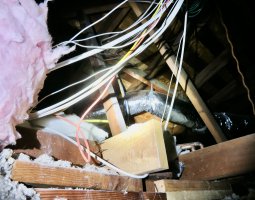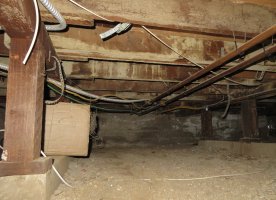Doing a minor refresh to a retail store, we uncovered a breaker panel behind a manufactured retail shelf unit. Back in 1994 they did a remodel and scope of work called out “remove 2 existing panels, replace with junction boxes, extend existing branch circuits to new panels”. This picture shows what we discovered, looks like the old upper panel was removed and a blank cover was installed. No idea if the lower panel is still live, there are 9 breakers all in the “on” position. no electrician available to check it until next week.
One upper manager says to have it checked and if it’s just a j-box or pull box, cover it back up. Does that meet code? Obviously if there are wire junctions it doesn’t. What if the conductors just pass through?
One upper manager says to have it checked and if it’s just a j-box or pull box, cover it back up. Does that meet code? Obviously if there are wire junctions it doesn’t. What if the conductors just pass through?

